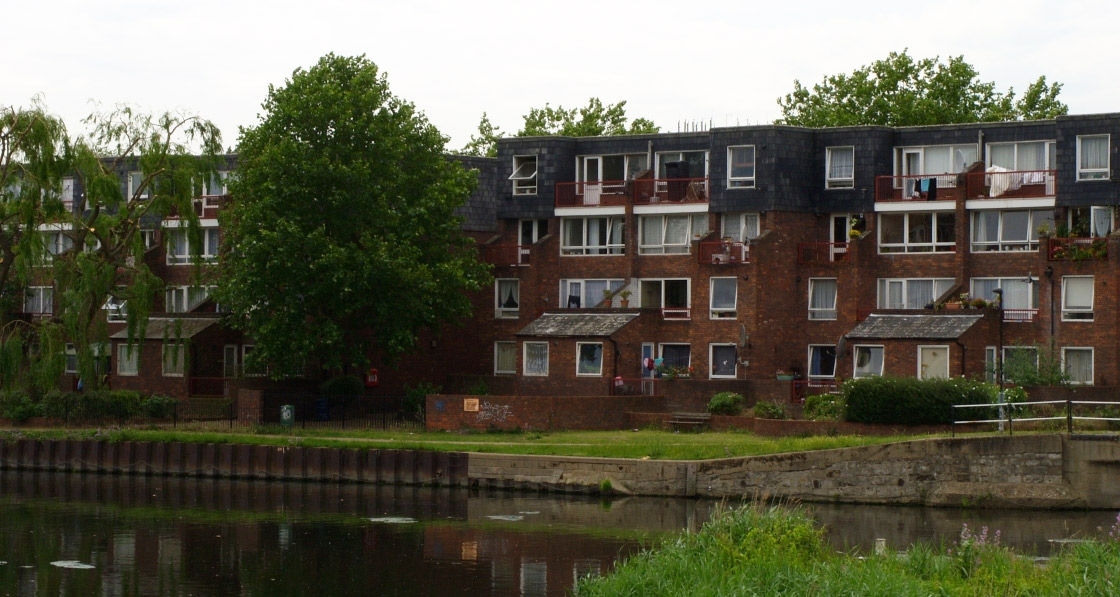
- Blogs
- Posted
Are social housing retrofit efforts failed by finance models?
Roughly 50,000 excess winter deaths occur annually between the UK and Ireland, with fuel poverty a primary cause. Yet although concerted social housing retrofit efforts could help tackle climate change while preventing thousands of senseless deaths of vulnerable people, flawed financial modelling is letting us down, argues Peter Rickaby.
For many years there has been a view that improving the energy efficiency of Britain’s housing stock should be led by social housing. In 1994 the Department of the Environment’s guide Energy Efficiency in Council Housing suggested that housing organisations should know the energy ratings of their dwellings and integrate energy work into their housing improvement activity. More recently, Margaret Beckett, then a housing minister, repeated the mantra that social housing should lead on energy efficiency, and for a while the Housing Corporation required housing associations to develop and implement sustainability strategies. Why has so little progress been made?
Much has changed. By 2004, after years of under-investment, social housing had an unsustainable £19 billion backlog of repairs. Consequently the Decent Homes programme was imposed: it repaired roofs and provided new kitchens but paid lip service to energy efficiency. In parallel large scale voluntary transfers and the establishment of tenant management organisations and arm’s length management organisations opened more flexible funding options and took some housing investment off the public balance sheet. The industry rose to the challenge, restructured, refinanced and delivered Decent Homes.
Unfortunately the end of the Decent Homes programme coincided with new political initiatives: consolidation of housing organisations into groups, deregulation, privatisation, rent reduction and the right-tobuy. Asset managers emerged from the Decent Homes tunnel, blinking in the sunlight, into a landscape from which someone had taken away the tracks. Other than the fuel poverty regulations there is little guidance about what they are expected to do about energy efficiency.
Against this backdrop the Homes and Communities Agency promotes a corporate approach, encouraging housing organisations to behave like commercial property companies. In response, consultants have developed financial models that use elemental data (about roofs, kitchen fittings, etc.) from sample stock condition surveys: they estimate the life of each element and calculate the necessary investments in repairs and replacements. The models compare the required investments with rental income and calculate each dwelling’s ‘net present value’. Dwellings with negative NPVs are deemed uneconomic and earmarked for disposal. Many housing organisations now use such models.
There are three problems with this approach. The first is that it encourages disposal of the least energy efficient homes – the ones that require the most investment. This is passing the buck: those homes will be sold to private sector landlords or tenants who are less willing or able to invest in energy efficiency. It would be more appropriate to demolish them and redevelop the sites with new homes built to the passive house standard.
The second problem is that energy efficiency is expensive. The cost of improving a typical housing stock to a realistic affordable warmth standard (e.g. SAP 80) or an appropriate environmental standard (e.g. 50% reduction in emissions) is eye-watering. When this cost is included in the financial model the level of investment required causes all the NPVs to go negative. Consequently fuel poverty and climate change have become like two elephants in the room – they are ignored because the challenge is too big. As a housing director recently remarked “We will improve energy efficiency when we are told or paid to do it”.
The third problem is that the financial models do not include tenants’ fuel costs, even though they are a significant and growing proportion of housing costs. If tenants’ fuel costs were included in the models the NPVs would still be negative, but at least investment in energy efficiency would improve them. The nub of the problem is that commercial asset management models are inappropriate to social housing. Public housing is not a commercial investment, it has a social purpose: to provide affordable homes for poor people. Most social housing organisations acknowledge that delivering affordable warmth is a key element of affordable housing (given that rents are subsidised by benefits but fuel costs are not), but they do not seem to realise that their financial models are not fit for purpose. Housing consultants are aware of this problem but many seem unwilling to address it. One suggested that energy ratings could be used in the models as evidence for marginal reductions in the estimated costs of complaints, repairs and void properties. This is a pathetic response – what is the point of a model that ignores not only key challenges for the sector but also key stakeholders and their costs?
There is cause for optimism. Some asset managers have realised that if they don’t rise to the twin challenges of fuel poverty and climate change, and provide leadership, then nobody else will. The National Housing Maintenance Forum has recently published online best practice guidance on fuel saving improvements. Some housing associations have integrated energy efficiency into their strategies, and for some fuel poverty is now a key driver of investment. However, there is still a long way to go.






